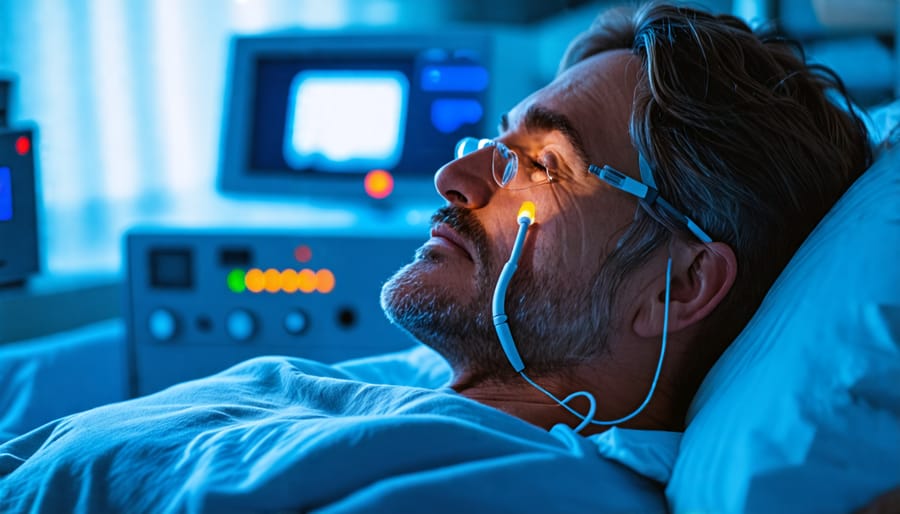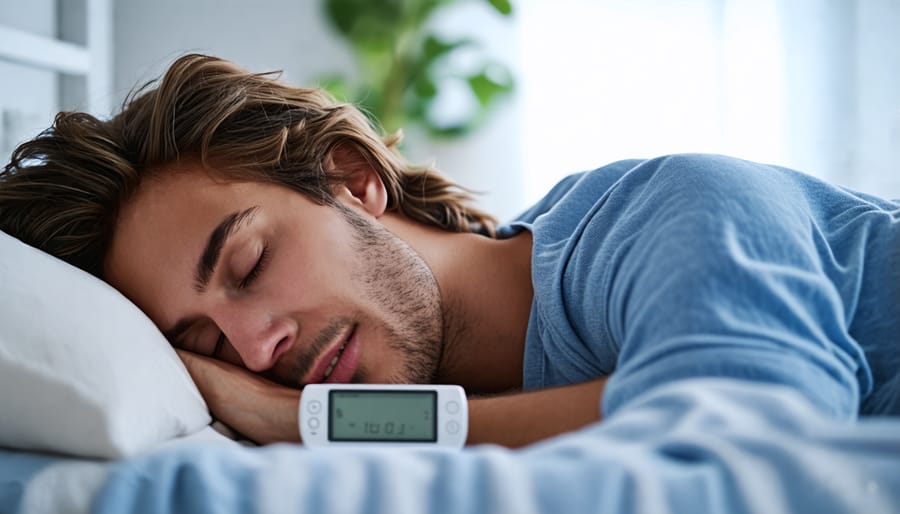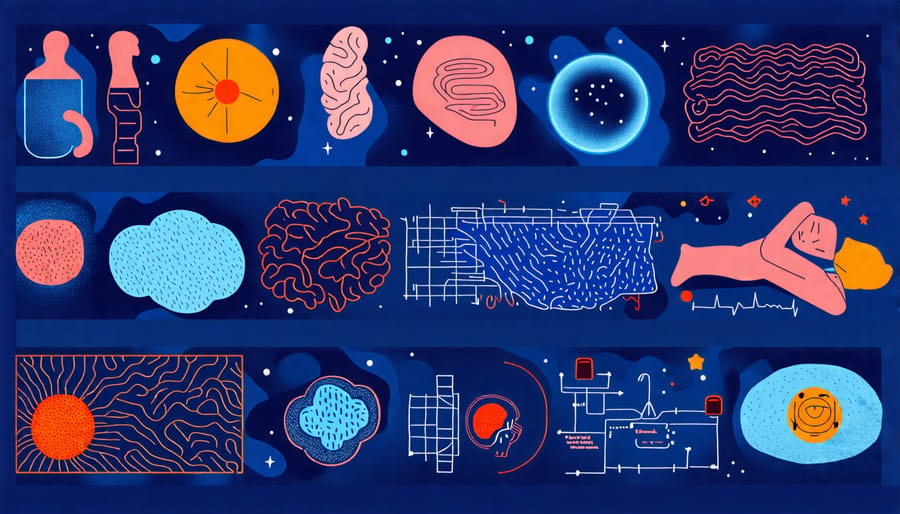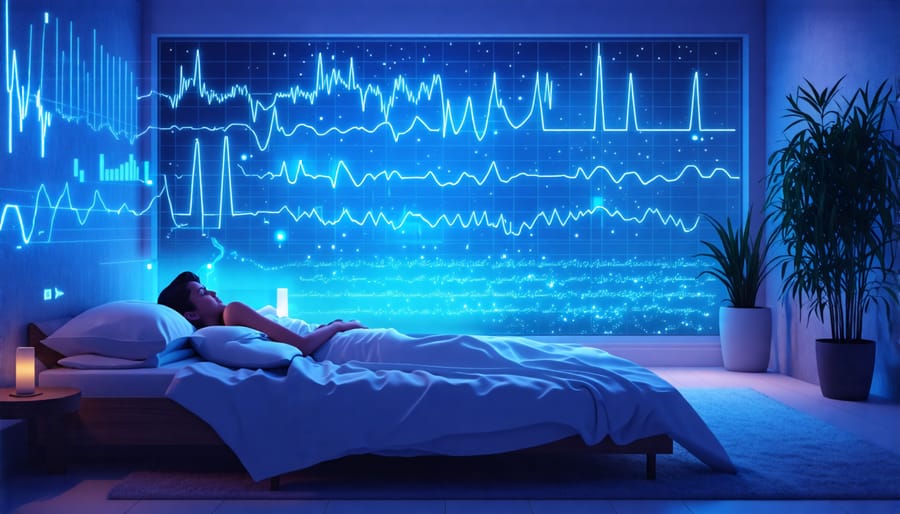Sleep disorders can have a profound impact on your health and quality of life. If you’re struggling with poor sleep, a sleep study may be the key to uncovering the root cause and finding effective solutions. Here’s what you need to know about Z sleep diagnostics:
During a Z sleep study, specialized equipment is used to monitor your brain waves, heart rate, breathing, and other vital signs as you sleep. This comprehensive evaluation can detect a wide range of sleep disorders, including improving sleep quality, insomnia, narcolepsy, and restless leg syndrome.
To prepare for your sleep study, avoid caffeine and alcohol on the day of the test, and stick to your regular sleep schedule in the days leading up to it. Bring comfortable sleepwear and any essential items you need for your bedtime routine. Most importantly, relax – the sleep lab is designed to be a comfortable, supportive environment where you can get the rest you need while providing valuable insights into your sleep health.
With the results of your Z sleep diagnostic test, your healthcare provider can develop a personalized treatment plan to address any underlying issues and help you achieve the restorative, refreshing sleep your body needs. Don’t let sleep problems hold you back – take the first step towards better sleep today.
What is a Z Sleep Study?
Polysomnography
A polysomnography, or overnight sleep study, is a comprehensive test that records various bodily functions during sleep. During the study, electrodes are placed on the scalp to measure brain waves, which can identify sleep stages and any abnormalities in brain activity. Breathing is monitored through nasal cannulas and chest bands, as sleep disorders like sleep apnea can cause pauses in breathing. Heart rate is tracked with electrodes on the chest, providing insights into cardiovascular health during sleep. Leg movements are also recorded, as conditions like restless leg syndrome can disrupt sleep. Additionally, eye movements, muscle activity, and oxygen levels are measured. This detailed data allows sleep specialists to diagnose a wide range of sleep disorders and develop personalized treatment plans. While the numerous sensors may seem intimidating, most people find that they are able to sleep relatively well during the study.

Home Sleep Tests
Home sleep tests, also known as unattended sleep studies, provide a convenient alternative to in-lab polysomnography for diagnosing sleep disorders. These tests involve wearing a portable device that collects data on your breathing, heart rate, and oxygen levels while you sleep in the comfort of your own bed. Unlike in-lab studies, home sleep tests do not measure brain waves or leg movements, making them less comprehensive but more accessible and cost-effective. Home sleep tests are primarily used to diagnose obstructive sleep apnea and may not be suitable for individuals with certain medical conditions or suspected of having other sleep disorders. Your healthcare provider can help determine whether a home sleep test is appropriate for your specific situation. If a home sleep test indicates the presence of a sleep disorder, an in-lab study may be recommended for a more detailed evaluation and treatment plan.


Common Sleep Disorders Diagnosed with Z Sleep Studies
Sleep Apnea
Sleep apnea is a disorder characterized by repeated pauses in breathing during sleep. The two main types are obstructive sleep apnea (OSA), caused by throat muscle relaxation blocking the airway, and central sleep apnea, where the brain fails to send proper signals to breathing muscles. Symptoms may include loud snoring, gasping for air, daytime sleepiness, morning headaches, and difficulty concentrating. Left untreated, sleep apnea can lead to serious health issues like high blood pressure, heart disease, and stroke. Z sleep studies, or polysomnography, involve overnight monitoring of brain activity, heart rate, breathing, and blood oxygen levels to diagnose sleep apnea accurately. This non-invasive test helps identify the type and severity of sleep apnea, allowing for personalized treatment plans to improve sleep quality and overall health. If you suspect you may have sleep apnea, speak with your healthcare provider about whether a Z sleep study is right for you.
Insomnia
Insomnia is a common sleep disorder characterized by difficulty falling asleep, staying asleep, or both. Z sleep studies can help identify insomnia by monitoring brain waves, eye movements, and muscle activity during sleep. These tests can also rule out other underlying causes of sleep disturbances, such as sleep apnea, restless leg syndrome, or periodic limb movement disorder. By identifying the specific type of insomnia and any contributing factors, healthcare providers can develop targeted treatment plans to improve sleep quality and duration. Treatment options may include cognitive-behavioral therapy, relaxation techniques, sleep hygiene education, and in some cases, medication. With proper diagnosis and treatment, individuals with insomnia can achieve more restful, restorative sleep and improve their overall health and well-being.
Narcolepsy and Other Hypersomnias
Z sleep diagnostics play a crucial role in diagnosing narcolepsy and other hypersomnias, such as idiopathic hypersomnia. These disorders cause excessive daytime sleepiness, often interfering with daily activities and quality of life. During a sleep study, sensors monitor brain waves, eye movements, muscle activity, and heart rhythm to identify patterns associated with narcolepsy, like entering REM sleep quickly during naps. The Multiple Sleep Latency Test (MSLT) assesses daytime sleepiness by measuring how quickly a person falls asleep during scheduled naps. Combining overnight polysomnography and the MSLT provides a comprehensive evaluation for diagnosing narcolepsy and other hypersomnias. Accurate diagnosis is essential for developing an effective treatment plan, which may include medications, lifestyle changes, and regular sleep schedules. If excessive daytime sleepiness is impacting your life, talk to your healthcare provider about whether a sleep study could help identify the underlying cause and guide treatment.
Preparing for Your Z Sleep Study
What to Bring
When packing for your overnight sleep study, bring comfortable pajamas or sleepwear, as well as a change of clothes for the next day. Don’t forget essential toiletries like a toothbrush, toothpaste, and any medications you regularly take. Consider bringing a favorite pillow or blanket for added comfort, but check with the sleep center first. They will likely provide bedding, but some allow personal items. You may also want to pack a book or quiet activity to help you relax before bedtime. Avoid bringing valuables, as the sleep center is not responsible for lost or stolen items. Lastly, remember to bring any paperwork or forms provided by the sleep center.
Sleep Hygiene Tips
To optimize your sleep leading up to the study, establish a consistent sleep schedule by going to bed and waking up at the same times each day. Create a relaxing bedtime routine that helps you unwind, such as taking a warm bath, reading a book, or practicing gentle stretching. Ensure your bedroom is cool, quiet, and dark to promote a comfortable sleep environment. Avoid caffeine, alcohol, and large meals close to bedtime, as these can disrupt your sleep. Limit screen time before bed, as the blue light emitted by electronic devices can interfere with your natural sleep-wake cycle. Regular exercise can improve sleep quality, but avoid intense workouts too close to bedtime. By adopting these sleep hygiene practices, you can help ensure that your sleep study captures an accurate representation of your typical sleep patterns and potential issues.
Next Steps After Your Z Sleep Diagnosis
Once you have completed a Z sleep study and received your results, your sleep specialist will review the findings with you in detail. Depending on the diagnosis, they may recommend lifestyle changes, such as improving your sleep hygiene tips, or specific treatments. For sleep apnea, common therapies include continuous positive airway pressure (CPAP) machines, oral appliances, and in some cases, surgery. Insomnia treatments often involve cognitive-behavioral therapy for insomnia (CBT-I), relaxation techniques, and occasionally, medication. Narcolepsy and other sleep disorders may require a combination of lifestyle adjustments, medications, and ongoing management under the guidance of a sleep specialist. Your healthcare provider will work with you to develop a personalized treatment plan based on your specific diagnosis, symptoms, and overall health. It’s essential to follow through with the recommended interventions and attend regular follow-up appointments to monitor your progress and make any necessary adjustments. With proper treatment and management, most people with sleep disorders can experience significant improvements in their sleep quality, daytime functioning, and overall well-being.
Conclusion
Z sleep diagnostics play a crucial role in identifying and diagnosing various sleep disorders, enabling individuals to access appropriate treatment options and improve their overall health and quality of life. By undergoing these tests, patients can gain valuable insights into their sleep patterns and any underlying issues that may be affecting their rest. Addressing sleep disorders not only leads to better sleep quality but also contributes to improved mental well-being, daytime functioning, and reduced risk of chronic health conditions. If you suspect that you or a loved one may be experiencing a sleep disorder, it is essential to consult with a healthcare professional and consider undergoing Z sleep diagnostics. Taking proactive steps towards understanding and managing your sleep health can have a profound impact on your overall wellness and happiness.

